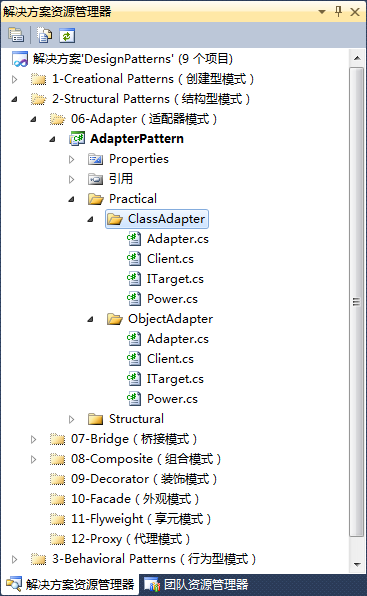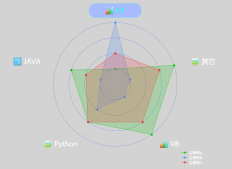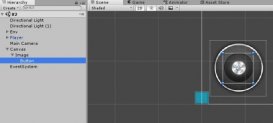在實際的軟件系統(tǒng)設計和開發(fā)中,為了完成某項工作需要購買一個第三方的庫來加快開發(fā)。這帶來一個問題,在應用程序中已經(jīng)設計好的功能接口,與這個第三方提供的接口不一致。為了使得這些接口不兼容的類可以在一起工作,適配器模式提供了一種接口的適配機制。
適配器模式的設計思想在生活中經(jīng)常會應用到,如我們在給手機充電的時候,不可能直接在220V電源上直接充電,而是用手機充電器轉換成手機需要的電壓才可以正常充電,否則就不可以完成充電,這個充電器就起到了適配的作用。
適配器模式結構實現(xiàn)
1.類適配器結構實現(xiàn)

ITarget.cs:
|
1
2
3
4
5
6
7
8
9
10
11
12
13
14
15
16
17
18
19
20
21
22
23
24
25
26
27
28
29
30
31
32
33
34
35
36
37
38
39
40
41
42
43
44
45
46
47
48
49
50
51
52
53
54
55
56
57
58
59
60
61
62
63
64
|
using System;using System.Collections.Generic;using System.Linq;using System.Text;namespace DesignPatterns.AdapterPattern.Structural.ClassAdapter{ public interface ITarget { void Request(); }} Adaptee.cs:using System;using System.Collections.Generic;using System.Linq;using System.Text;namespace DesignPatterns.AdapterPattern.Structural.ClassAdapter{ public class Adaptee { public void SpecificRequest() { Console.WriteLine("Called SpecificRequest()"); } }} Adapter.cs:using System;using System.Collections.Generic;using System.Linq;using System.Text;namespace DesignPatterns.AdapterPattern.Structural.ClassAdapter{ public class Adapter : Adaptee, ITarget { public void Request() { this.SpecificRequest(); } }} Client.cs:using System;using System.Collections.Generic;using System.Linq;using System.Text;namespace DesignPatterns.AdapterPattern.Structural.ClassAdapter{ public class Client { static void Main(string[] args) { ITarget t = new Adapter(); t.Request(); } }} |
運行輸出:
|
1
2
|
Called SpecificRequest()請按任意鍵繼續(xù). . . |
2.對象適配器結構實現(xiàn)
Client需要調用Request方法,而Adaptee并沒有該方法,為了使Client能夠使用Adaptee類,需要提供一個類Adapter。這個類包含了一個Adaptee的實例,將Client與Adaptee銜接起來。
ITarget.cs:
|
1
2
3
4
5
6
7
8
9
10
11
12
|
using System;using System.Collections.Generic;using System.Linq;using System.Text;namespace DesignPatterns.AdapterPattern.Structural.ObjectAdapter{ public interface ITarget { void Request(); }} |
Target.cs:
|
1
2
3
4
5
6
7
8
9
10
11
12
13
14
15
|
using System;using System.Collections.Generic;using System.Linq;using System.Text;namespace DesignPatterns.AdapterPattern.Structural.ObjectAdapter{ public class Target : ITarget { public virtual void Request() { Console.WriteLine("Called Target Request()"); } }} |
Adaptee.cs:
|
1
2
3
4
5
6
7
8
9
10
11
12
13
14
15
|
using System;using System.Collections.Generic;using System.Linq;using System.Text;namespace DesignPatterns.AdapterPattern.Structural.ObjectAdapter{ public class Adaptee { public void SpecificRequest() { Console.WriteLine("Called SpecificRequest()"); } }} |
Adapter.cs:
|
1
2
3
4
5
6
7
8
9
10
11
12
13
14
15
16
17
|
using System;using System.Collections.Generic;using System.Linq;using System.Text;namespace DesignPatterns.AdapterPattern.Structural.ObjectAdapter{ public class Adapter : Target { private Adaptee _adaptee = new Adaptee(); public override void Request() { _adaptee.SpecificRequest(); } }} |
Client.cs:
|
1
2
3
4
5
6
7
8
9
10
11
12
13
14
15
16
|
using System;using System.Collections.Generic;using System.Linq;using System.Text;namespace DesignPatterns.AdapterPattern.Structural.ObjectAdapter{ public class Client { static void Main(string[] args) { ITarget t = new Adapter(); t.Request(); } }} |
適配器模式實踐應用
以手機充電的電源適配器為例,用適配器模式的解決方案。

1.類適配器結構實現(xiàn)
ITarget.cs
|
1
2
3
4
5
6
7
8
9
10
11
12
13
14
15
16
17
18
19
20
21
22
23
24
25
26
27
28
29
30
31
32
33
34
35
36
37
38
39
40
41
42
43
44
45
46
47
48
49
50
51
52
53
54
55
56
57
58
59
60
61
62
63
64
65
66
|
using System;using System.Collections.Generic;using System.Linq;using System.Text;namespace DesignPatterns.AdapterPattern.Practical.ClassAdapter{ public interface ITarget { void GetPower(); }} Power.csusing System;using System.Collections.Generic;using System.Linq;using System.Text;namespace DesignPatterns.AdapterPattern.Practical.ClassAdapter{ public class Power { public void GetPower220V() { Console.WriteLine("從電源中得到220V的電壓"); } }} Adapter.csusing System;using System.Collections.Generic;using System.Linq;using System.Text;namespace DesignPatterns.AdapterPattern.Practical.ClassAdapter{ public class Adapter : Power, ITarget { public void GetPower() { this.GetPower220V(); Console.WriteLine("得到手機的充電電壓!"); } }} Client.csusing System;using System.Collections.Generic;using System.Linq;using System.Text;namespace DesignPatterns.AdapterPattern.Practical.ClassAdapter{ public class Client { static void Main(string[] args) { Console.WriteLine("手機:"); ITarget t = new Adapter(); t.GetPower(); } }} |
運行輸出:
|
1
2
3
4
|
手機:從電源中得到220V的電壓得到手機的充電電壓!請按任意鍵繼續(xù). . . |
2.對象適配器結構實現(xiàn)
ITarget.cs
|
1
2
3
4
5
6
7
8
9
10
11
12
|
using System;using System.Collections.Generic;using System.Linq;using System.Text;namespace DesignPatterns.AdapterPattern.Practical.ObjectAdapter{ public interface ITarget { void GetPower(); }} |
Power.cs
|
1
2
3
4
5
6
7
8
9
10
11
12
13
14
15
|
using System;using System.Collections.Generic;using System.Linq;using System.Text;namespace DesignPatterns.AdapterPattern.Practical.ObjectAdapter{ public class Power { public void GetPower220V() { Console.WriteLine("從電源中得到220V的電壓"); } }} |
Adapter.cs
|
1
2
3
4
5
6
7
8
9
10
11
12
13
14
15
16
17
18
19
20
21
22
23
24
25
|
using System;using System.Collections.Generic;using System.Linq;using System.Text;namespace DesignPatterns.AdapterPattern.Practical.ObjectAdapter{ public class Adapter : ITarget { public Power _power; public Adapter(Power power) { this._power = power; } /// <summary> /// 得到想要的電壓 /// </summary> public void GetPower() { _power.GetPower220V(); Console.WriteLine("得到手機的充電電壓!"); } }} |
Client.cs
|
1
2
3
4
5
6
7
8
9
10
11
12
13
14
15
16
17
|
using System;using System.Collections.Generic;using System.Linq;using System.Text;namespace DesignPatterns.AdapterPattern.Practical.ObjectAdapter{ public class Client { static void Main(string[] args) { Console.WriteLine("手機:"); ITarget t = new Adapter(new Power()); t.GetPower(); } }} |
適配器模式的優(yōu)缺點
在引言部分已經(jīng)提出,適配器模式用來解決現(xiàn)有對象與客戶端期待接口不一致的問題,下面詳細總結下適配器兩種形式的優(yōu)缺點。
1.類的適配器模式:
優(yōu)點:
可以在不修改原有代碼的基礎上來復用現(xiàn)有類,很好地符合 “開閉原則”
可以重新定義Adaptee(被適配的類)的部分行為,因為在類適配器模式中,Adapter是Adaptee的子類
僅僅引入一個對象,并不需要額外的字段來引用Adaptee實例(這個即是優(yōu)點也是缺點)。
缺點:
用一個具體的Adapter類對Adaptee和Target進行匹配,當如果想要匹配一個類以及所有它的子類時,類的適配器模式就不能勝任了。因為類的適配器模式中沒有引入Adaptee的實例,光調用this.SpecificRequest方法并不能去調用它對應子類的SpecificRequest方法。
采用了 “多繼承”的實現(xiàn)方式,帶來了不良的高耦合。
2.對象的適配器模式
優(yōu)點:
可以在不修改原有代碼的基礎上來復用現(xiàn)有類,很好地符合 “開閉原則”(這點是兩種實現(xiàn)方式都具有的)
采用 “對象組合”的方式,更符合松耦合。
缺點:
使得重定義Adaptee的行為較困難,這就需要生成Adaptee的子類并且使得Adapter引用這個子類而不是引用Adaptee本身。
使用場景
在以下情況下可以考慮使用適配器模式:
系統(tǒng)需要復用現(xiàn)有類,而該類的接口不符合系統(tǒng)的需求
想要建立一個可重復使用的類,用于與一些彼此之間沒有太大關聯(lián)的一些類,包括一些可能在將來引進的類一起工作。
對于對象適配器模式,在設計里需要改變多個已有子類的接口,如果使用類的適配器模式,就要針對每一個子類做一個適配器,而這不太實際。
.NET中適配器模式的實現(xiàn)
1.適配器模式在.NET Framework中的一個最大的應用就是COM Interop。COM Interop就好像是COM和.NET之間的一座橋梁(關于COM互操作更多內容可以參考我的互操作系列)。COM組件對象與.NET類對象是完全不同的,但為了使.NET程序像使用.NET對象一樣使用COM組件,微軟在處理方式上采用了Adapter模式,對COM對象進行包裝,這個包裝類就是RCW(Runtime Callable Wrapper)。RCW實際上是runtime生成的一個.NET類,它包裝了COM組件的方法,并內部實現(xiàn)對COM組件的調用。如下圖所示:

2..NET中的另外一個適配器模式的應用就是DataAdapter。ADO.NET為統(tǒng)一的數(shù)據(jù)訪問提供了多個接口和基類,其中最重要的接口之一是IdataAdapter。DataAdpter起到了數(shù)據(jù)庫到DataSet橋接器的作用,使應用程序的數(shù)據(jù)操作統(tǒng)一到DataSet上,而與具體的數(shù)據(jù)庫類型無關。甚至可以針對特殊的數(shù)據(jù)源編制自己的DataAdpter,從而使我們的應用程序與這些特殊的數(shù)據(jù)源相兼容。
















